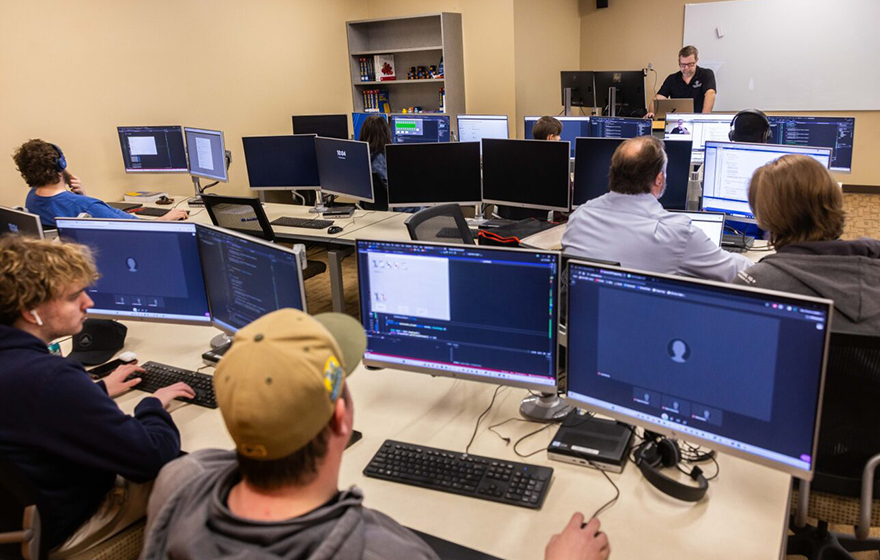Why Picking the Right Software Development Partner Can Transform Your Project
Wiki Article
Devoted Developers vs. In-House Teams: Which Is Right for You?
The decision in between making use of committed developers and keeping an internal team is a significant one that can affect the trajectory of your projects and general service technique. On the other hand, in-house groups add to a natural company society and a nuanced understanding of long-term goals.Recognizing Dedicated Developers
The expanding need for specialized abilities in the tech market has resulted in the introduction of specialized programmers as a practical solution for numerous companies. These experts are usually contracted on a job basis, allowing business to utilize specific know-how without the long-lasting dedication related to full-time hires. Committed designers are frequently ingrained within a customer's group, providing adaptability and scalability to satisfy project needs.This design enables companies to access a global talent pool, which is particularly helpful in a swiftly progressing technological landscape. Committed programmers can be sourced from various geographical locations, making sure that firms can discover the appropriate capability at affordable rates. They typically bring a riches of experience and knowledge, having actually worked on varied jobs throughout various industries.
Additionally, specialized developers can focus specifically on the jobs at hand, boosting productivity and efficiency. They are equipped to integrate seamlessly into existing operations, working together very closely with in-house groups to attain task objectives. This method not only reduces the problem of recruitment and training but additionally enables companies to continue to be nimble, adjusting rapidly to altering market demands and technical innovations.
Advantages of In-House Teams

Furthermore, in-house teams have a tendency to have a much deeper understanding of the business's objective, values, and objectives. This positioning can improve employee engagement and inspiration, as staff member feel more attached to their work and the organization's success. In addition, having a dedicated in-house group enables better positioning of purposes and strategies, as these participants are constantly concentrated on the business's top priorities.
In-house teams likewise help with quicker decision-making procedures, as they can react much more swiftly to adjustments and challenges. The well-known relationships and familiarity with business methods enable structured workflows and minimized miscommunication. Inevitably, the mix of a natural culture, positioning with business objectives, and reliable interaction makes in-house teams a useful property for lots of organizations, particularly those seeking to grow long-lasting development and technology.
Price Factors To Consider
When assessing expense considerations, both in-house groups and committed designers existing unique monetary effects for organizations. Involving devoted developers generally entails a pay-per-project or hourly rate version, which can be affordable for companies with varying project demands. This technique allows for versatility in scaling sources up or down, ensuring that business just pay for the solutions they need.On the other hand, internal teams entail dealt with costs, consisting of salaries, benefits, and overhead expenses such as workplace room and devices. While this design supplies better control and prompt availability of sources, it why not try this out may lead to higher long-term costs, particularly if the work does not justify a permanent team.
Moreover, business ought to think about the concealed costs associated with employment and training of in-house employees, which can further stress budgets. In many cases, the moment and sources spent on managing an internal team can detract from the organization's core company goals.

Task Administration and Versatility
Project monitoring and adaptability are essential elements that affect the choice between devoted programmers and internal groups. Committed teams commonly have actually developed procedures for taking care of projects successfully, leveraging particular approaches like Agile or Scrum, which help with iterative progress and adaptability.
Inevitably, the choice between internal teams and devoted designers depends java software development upon the wanted level of flexibility and the specific task monitoring needs. Companies must review their functional characteristics, task complexity, and source schedule to figure out which choice aligns ideal with their strategic goals.
Making the Right Choice
Choosing the right advancement strategy-- internal groups or dedicated designers-- needs a cautious assessment of different elements that line up with a company's critical objectives. software engineering staffing. Take into consideration the nature of the job. Dedicated programmers might be much more ideal if it requires specialized abilities or a fast scale-up. Conversely, in-house groups can offer better continuity and integration with existing employees.Following, assess your budget. Committed designers typically offer a cost-effective remedy for temporary tasks, while internal groups might incur higher long-term expenditures as a result of wages, advantages, and overhead costs. Assess the degree of control and cooperation preferred; internal teams generally cultivate stronger interaction and positioning with firm culture.
Furthermore, think about the time Check This Out structure. If prompt results are required, dedicated programmers can be onboarded quickly, whereas developing an in-house group takes some time for recruitment and training. Ultimately, evaluate the long-lasting vision of your organization. Investing in an in-house group may yield far better returns over time if constant growth is vital. Ultimately, the decision depends upon a detailed analysis of these variables, ensuring positioning with your company's functional needs and general goals.
Final Thought
Finally, the choice in between dedicated developers and in-house teams depends upon project requirements and business purposes. Committed programmers give adaptability and customized proficiency, making them suitable for temporary campaigns. Conversely, internal teams grow a cohesive culture and deeper placement with long-term objectives. Mindful analysis of spending plan restraints, task timelines, and preferred control levels is important for identifying the most appropriate strategy, making certain positioning with calculated priorities and functional performance.The choice between making use of specialized developers and keeping an in-house group is a significant one that can influence the trajectory of your jobs and overall service technique.Task administration and adaptability are important elements that affect the choice in between in-house groups and specialized programmers. software engineering staffing.In comparison, internal groups may succeed in maintaining a constant task management structure due to their knowledge with the organization's culture and lasting objectives. Dedicated developers commonly present an economical solution for short-term jobs, while internal groups may incur higher long-lasting costs due to wages, advantages, and overhead prices.In conclusion, the decision in between in-house teams and specialized programmers pivots on task requirements and organizational objectives
Report this wiki page